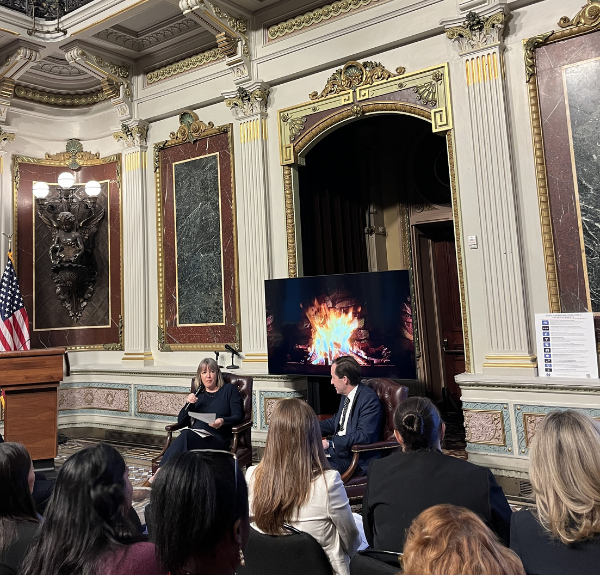Today, the Office of Management and Budget (OMB) released its final quarterly updates to the Biden-Harris President’s Management Agenda (PMA). While this will be the last set of regular quarterly public updates to this PMA, PMA teams will continue to work on achieving their final milestones through January 2025.
This quarter’s updates include vital efforts to improve recruitment and hiring, expanding digital services, increased innovation across acquisitions practices, and more. Below are highlights from each priority area. Visit the PMA section of the site to learn more.
Strengthening the Federal Workforce
This quarter, the Office of Personnel Management (OPM) introduced and supported several initiatives to improve and fortify federal hiring for both applicants and hiring managers.
OPM and OMB jointly released a memorandum in August to guide federal agencies in enhancing their ability to recruit, hire, and retain a diverse and skilled workforce. This initiative aims to strengthen the way agencies serve the American people. Building upon the ongoing efforts of the PMA, the memorandum is the culmination of years of data-driven research and innovative approaches to federal hiring. To support adoption of the hiring practices outlined in the memo, the Workforce implementation team launched a Federal Hiring Experience Learning series. Additionally, OPM hosted a Hiring Manager HX Symposium to showcase innovative hiring initiatives and conducted training sessions for HR Specialists and hiring managers on OPM tools and technology solutions.
To enhance the applicant experience and increase the pool of qualified candidates, USAJobs and OPM unveiled the Career Explorer (formerly known as the Job Exploration Tool) on September 27. This user-friendly tool helps job seekers identify suitable federal positions by matching their interests to relevant job opportunities through a brief questionnaire. The Career Explorer can help job seekers navigate the vast landscape of Federal Government employment options and find opportunities that are a good fit for their professional goals.
To streamline the hiring and onboarding of STEM roles in government, the Office of the National Cyber Director (ONCD), OMB, and OPM launched “Service for America” Engagement, Recruitment, and Hiring Campaign for cyber professionals.
To read about all of the updates to Priority 1 milestones and goals, check out the Workforce Priority page.
Expanding the Federal Customer Experience
Customer Experience priority teams made significant strides in improving efficiency and service delivery this quarter. They focused on various initiatives centered around digital services and sharing pilot findings.
The successful implementation of Online Passport Renewal and Direct File has allowed the State Department and IRS to significantly expand these essential services to a larger number of travelers and taxpayers through 2025. To streamline processes and reduce administrative burdens across government agencies, initiatives such as electronic signatures for Social Security Administration forms, offline reporting templates for Tribal members in remote regions, and centralized application portals like MySBA and the U.S. Patent and Trademark Office Trademark Center are being adopted.
Teams across designated Life Experiences are making significant progress in implementing trauma-informed practices through training over 300 FEMA frontline staff, distributing 10,000 Newborn Supply Kits to mothers and families in 10 states, and automatically renewing Medicaid coverage for over 5 million Americans. These collective efforts enhance the lives of millions of Americans by saving them time and money while reducing stress.
In addition to delivering on these commitments, customer experience teams continue to share learnings and best practices with peers across agencies, levels of government, and sectors.
-
The Recovering from a Disaster team developed a comprehensive Holistic Burden Assessment toolkit, incorporating insights and feedback from five federal agencies. This tool is designed to assist any customer-facing team in identifying, quantifying, and creating strategies to mitigate burdens within their processes.
-
The Facing a Financial Shock team incorporated IT procurement and vendor management insights to enhance the publicly available De-Risking Government Technology Guide after hosting a series of consultations and technical assistance workshops with state administrators.
-
The Approaching Retirement team hosted the third and final Federal Forum on Serving Older Adults. Over the course of the pilot, more than 380 staff from community-based organizations participated in peer-to-peer networking and conversations with federal officials, with 97% of respondents agreeing that participating increased their access to materials and tools that will help older adults they serve make informed retirement decisions.
To read about all of the updates to Priority 2 milestones and goals, check out the complete Customer Experience page.
Managing the Business of Government
Priority 3 teams focused on increasing innovation and reducing administrative burden across the many contracts, grants, and other financial assistance that serve the American people.
To foster lasting improvements in the federal acquisition system, teams launched a national pilot plan to strengthen the domestic market. This process was developed in collaboration with critical supply chain managers and procurement professionals to improve the acquisitions process. The insights are being incorporated into a playbook that outlines key ways to strengthen the resilience of domestic supply chains.
During this quarter, all Chief Acquisition Officer Council (CFO) Act agencies implemented internal guidance encouraging their acquisition workforce to adopt innovative practices outlined in the Periodic Table of Acquisition Innovations. These practices aim to enhance contract value, improve customer satisfaction, and increase opportunities for small businesses through promoting managed risk-taking and creativity, training, real-world examples, and agency best practices. These efforts have resulted in greater workforce satisfaction, delivery of critical mission support, and more opportunities for small businesses. For specific agency examples, check out the Chief Acquisition Officers Council report on Acquisition Innovation & Small Business Participation in Federal Procurement and the Acquisition Innovation Fact Sheet.
In support of strengthening federal financial management, agencies submitted plans for FY25 Notice of Funding Opportunity (NOFO) simplification efforts. These plans will result in the simplification of hundreds of NOFOs throughout next year, which will lower burden for tens of thousands of grant applicants. This builds on NOFO simplification pilots that agencies conducted in FY24, including AmeriCorps’ work to reduce the word count of their AmeriCorps State and National NOFO by one-third and the Department Transportation’s cutting of their Tribal Transit NOFO nearly in half.
To read about all of the updates to Priority 3 milestones and goals, check out the complete Business of Government page.
Stay Informed
While this is the final quarterly PMA release of FY2024, stay tuned for more highlights and stories as we reflect and celebrate PMA accomplishments through the end of the year.
We will update Performance.gov when the new PMA is announced. We invite you to continue to track our progress and keep up with events by following Performance.gov on LinkedIn and Twitter (X). Subscribe to our newsletter to receive updates straight to your inbox.




